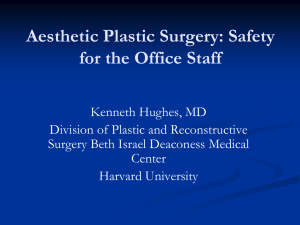- Arthroscopy
advertisement
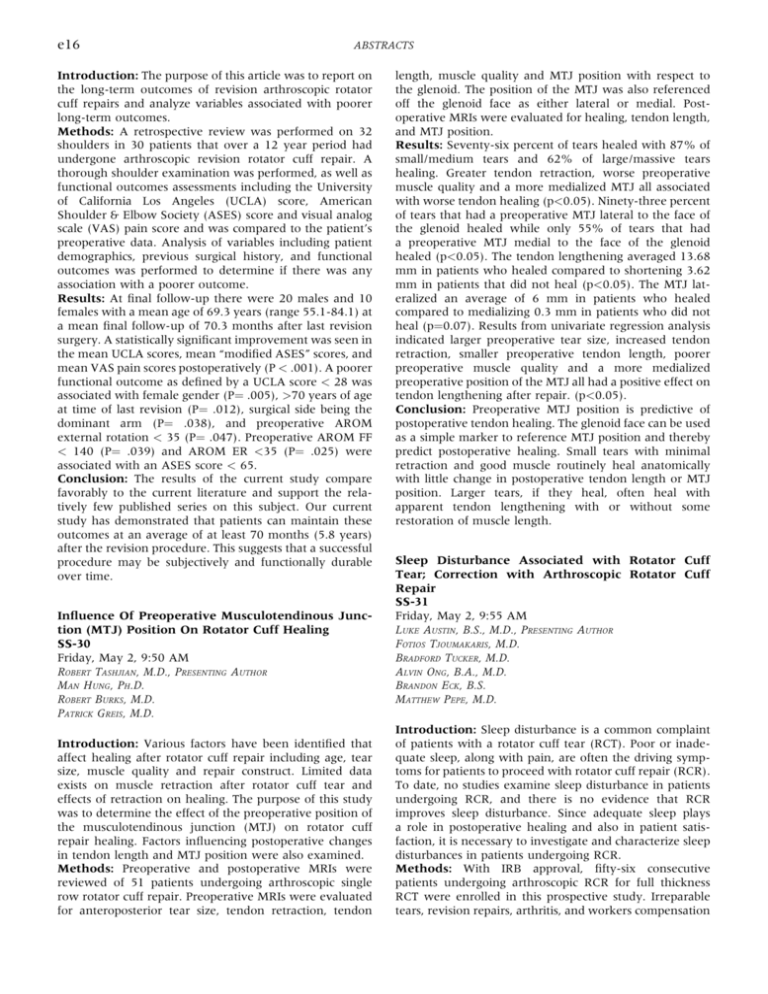
e16 ABSTRACTS Introduction: The purpose of this article was to report on the long-term outcomes of revision arthroscopic rotator cuff repairs and analyze variables associated with poorer long-term outcomes. Methods: A retrospective review was performed on 32 shoulders in 30 patients that over a 12 year period had undergone arthroscopic revision rotator cuff repair. A thorough shoulder examination was performed, as well as functional outcomes assessments including the University of California Los Angeles (UCLA) score, American Shoulder & Elbow Society (ASES) score and visual analog scale (VAS) pain score and was compared to the patient’s preoperative data. Analysis of variables including patient demographics, previous surgical history, and functional outcomes was performed to determine if there was any association with a poorer outcome. Results: At final follow-up there were 20 males and 10 females with a mean age of 69.3 years (range 55.1-84.1) at a mean final follow-up of 70.3 months after last revision surgery. A statistically significant improvement was seen in the mean UCLA scores, mean “modified ASES” scores, and mean VAS pain scores postoperatively (P < .001). A poorer functional outcome as defined by a UCLA score < 28 was associated with female gender (P¼ .005), >70 years of age at time of last revision (P¼ .012), surgical side being the dominant arm (P¼ .038), and preoperative AROM external rotation < 35 (P¼ .047). Preoperative AROM FF < 140 (P¼ .039) and AROM ER <35 (P¼ .025) were associated with an ASES score < 65. Conclusion: The results of the current study compare favorably to the current literature and support the relatively few published series on this subject. Our current study has demonstrated that patients can maintain these outcomes at an average of at least 70 months (5.8 years) after the revision procedure. This suggests that a successful procedure may be subjectively and functionally durable over time. Influence Of Preoperative Musculotendinous Junction (MTJ) Position On Rotator Cuff Healing SS-30 Friday, May 2, 9:50 AM ROBERT TASHJIAN, M.D., PRESENTING AUTHOR MAN HUNG, PH.D. ROBERT BURKS, M.D. PATRICK GREIS, M.D. Introduction: Various factors have been identified that affect healing after rotator cuff repair including age, tear size, muscle quality and repair construct. Limited data exists on muscle retraction after rotator cuff tear and effects of retraction on healing. The purpose of this study was to determine the effect of the preoperative position of the musculotendinous junction (MTJ) on rotator cuff repair healing. Factors influencing postoperative changes in tendon length and MTJ position were also examined. Methods: Preoperative and postoperative MRIs were reviewed of 51 patients undergoing arthroscopic single row rotator cuff repair. Preoperative MRIs were evaluated for anteroposterior tear size, tendon retraction, tendon length, muscle quality and MTJ position with respect to the glenoid. The position of the MTJ was also referenced off the glenoid face as either lateral or medial. Postoperative MRIs were evaluated for healing, tendon length, and MTJ position. Results: Seventy-six percent of tears healed with 87% of small/medium tears and 62% of large/massive tears healing. Greater tendon retraction, worse preoperative muscle quality and a more medialized MTJ all associated with worse tendon healing (p<0.05). Ninety-three percent of tears that had a preoperative MTJ lateral to the face of the glenoid healed while only 55% of tears that had a preoperative MTJ medial to the face of the glenoid healed (p<0.05). The tendon lengthening averaged 13.68 mm in patients who healed compared to shortening 3.62 mm in patients that did not heal (p<0.05). The MTJ lateralized an average of 6 mm in patients who healed compared to medializing 0.3 mm in patients who did not heal (p¼0.07). Results from univariate regression analysis indicated larger preoperative tear size, increased tendon retraction, smaller preoperative tendon length, poorer preoperative muscle quality and a more medialized preoperative position of the MTJ all had a positive effect on tendon lengthening after repair. (p<0.05). Conclusion: Preoperative MTJ position is predictive of postoperative tendon healing. The glenoid face can be used as a simple marker to reference MTJ position and thereby predict postoperative healing. Small tears with minimal retraction and good muscle routinely heal anatomically with little change in postoperative tendon length or MTJ position. Larger tears, if they heal, often heal with apparent tendon lengthening with or without some restoration of muscle length. Sleep Disturbance Associated with Rotator Cuff Tear; Correction with Arthroscopic Rotator Cuff Repair SS-31 Friday, May 2, 9:55 AM LUKE AUSTIN, B.S., M.D., PRESENTING AUTHOR FOTIOS TJOUMAKARIS, M.D. BRADFORD TUCKER, M.D. ALVIN ONG, B.A., M.D. BRANDON ECK, B.S. MATTHEW PEPE, M.D. Introduction: Sleep disturbance is a common complaint of patients with a rotator cuff tear (RCT). Poor or inadequate sleep, along with pain, are often the driving symptoms for patients to proceed with rotator cuff repair (RCR). To date, no studies examine sleep disturbance in patients undergoing RCR, and there is no evidence that RCR improves sleep disturbance. Since adequate sleep plays a role in postoperative healing and also in patient satisfaction, it is necessary to investigate and characterize sleep disturbances in patients undergoing RCR. Methods: With IRB approval, fifty-six consecutive patients undergoing arthroscopic RCR for full thickness RCT were enrolled in this prospective study. Irreparable tears, revision repairs, arthritis, and workers compensation



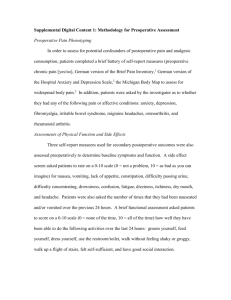

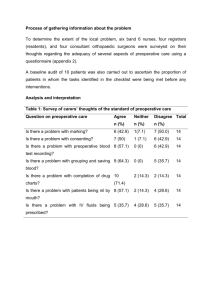
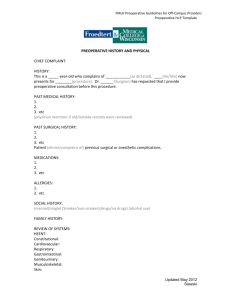
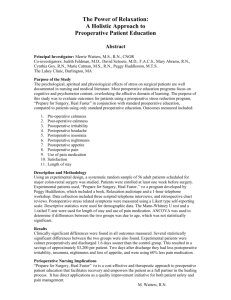
![Katharine Richardson Report [3]](http://s3.studylib.net/store/data/006878930_1-e7beece02355735d01e27b9fc730ab9c-300x300.png)
